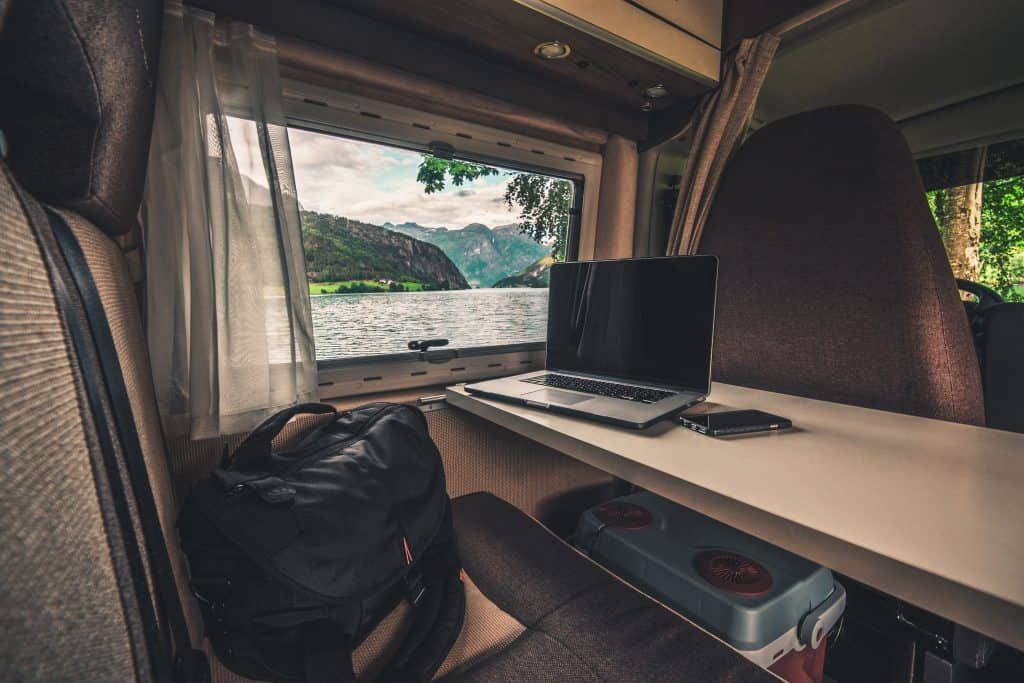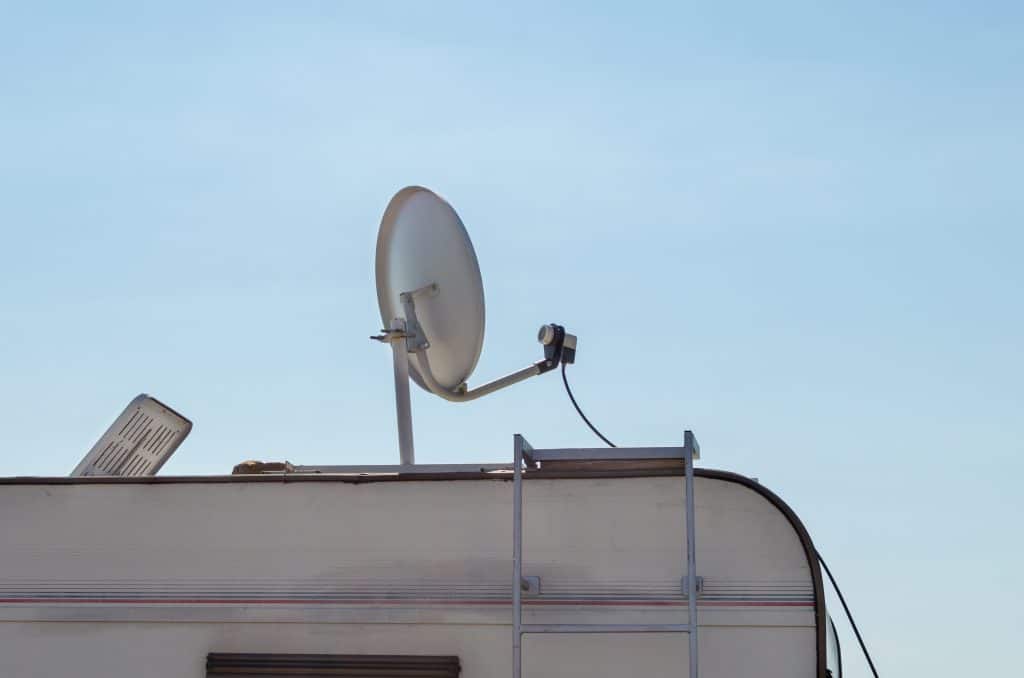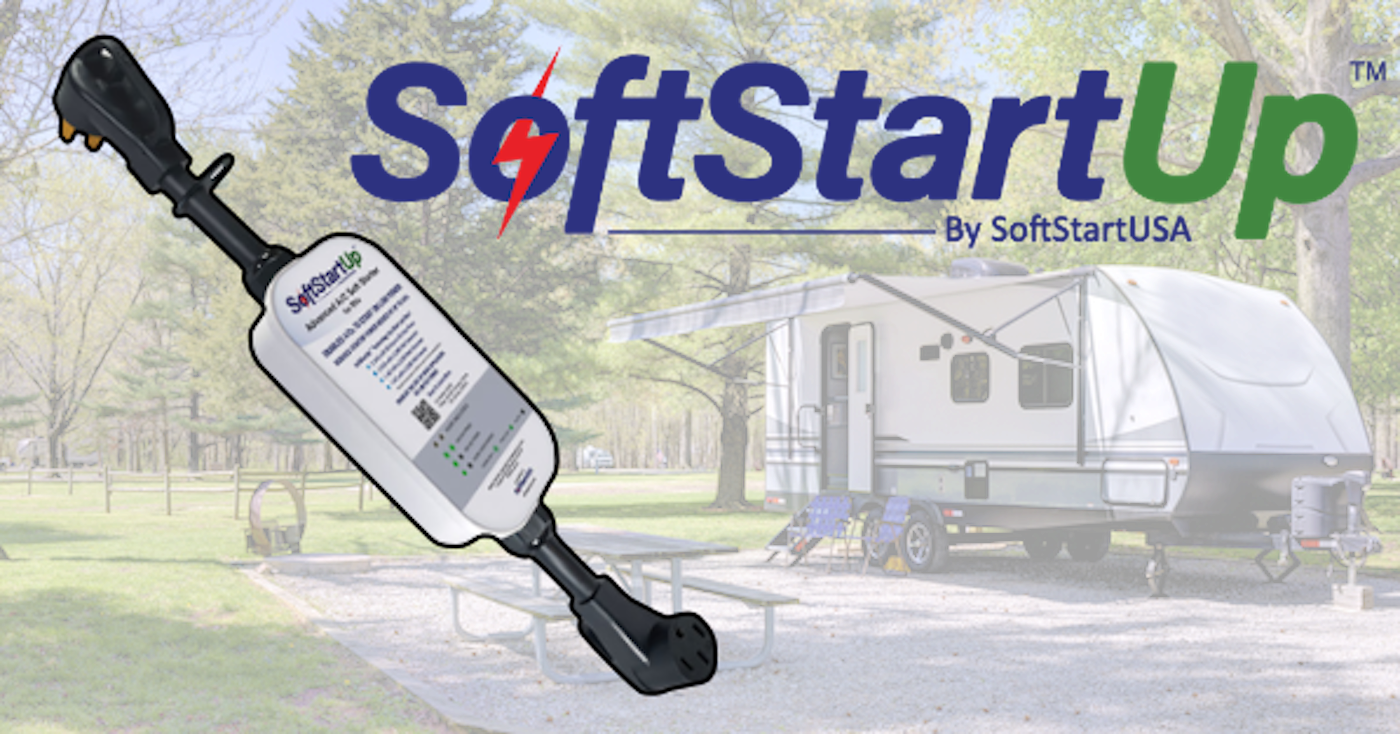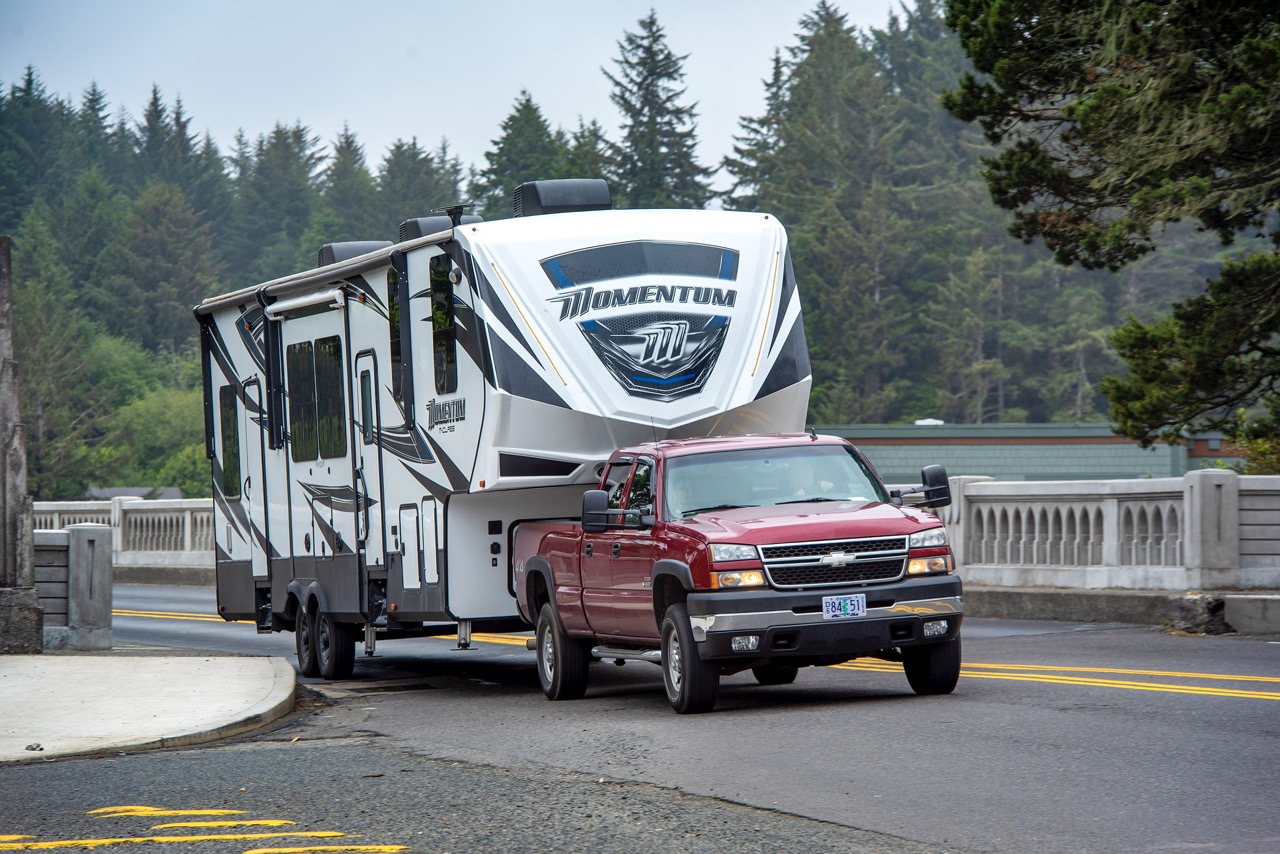
In this current day and age, WiFi is a necessary tool to access the growing world of social media, shopping, information, and communication across the globe. We need WiFi to do almost everything from work to spending our free time with video games and even down to dating. Even while on vacations or taking a trip in your RV, one of the first questions always asked is “Where can I get WiFi?”
You can get RV internet service almost anywhere through satellite, cellular, free carriers, DSL or cable. Costs and speeds vary between which type of service you choose to get. Typically you can expect a price range of free to about 300 dollars a month at the top end.
Home is Where the Wifi Is
Because this is such a loaded topic with a lot of different routes you can take, we will be going over the details of how to get it, the cost and expected speeds. It isn’t a simple flat rate for any option you choose to go with.
There are a few pros and cons with having a lot of options with WiFi. Because of the wide range of options you have, it can be tricky to know what will be right for you and your RV circumstances. If you live in your RV full time you will want a more sustainable option.
If you like to just take the RV out for an occasional trip with your family, don’t feel like you should or have to invest in a really expensive WiFi option. A good friend of mine always says, “work smarter, not harder.”
The same goes for picking the right WiFi network for what you need and not having to overspend or get a system that you aren’t totally satisfied with.
This will be a comprehensive guide to help you decided which internet service will be best for you, the price ranges, speeds and even how to set some types of WiFi up in your RV.
How to Get RV Internet Service

Like mentioned earlier, if you want to do any work from home or connect with friends you will need a great WiFi system to get you to where you want to be.
Most people may think that getting WiFi in your RV is the same as WiFi in your home. In some cases that may be true, but there are some essential plans and networks that are a lot different than what is offered in your home.
So what options do you have and how do you set them up?
Satellite
Just like how it sounds you will need a satellite provider and a receiver for you to get this kind of network. It is a more expensive option but can get you a connection even if you are out in the boons of your favorite camping spot.
In terms of how to set it up, you have a few options within this category as well. First, for the type of hardware, you can get would be 1. Mounted satellite dish. 2. Tripod satellite dish. 3. Router-style receiver boxes.
Mounted Satellite dishes are nice because they will always stay in just one place on your RV and even fold down when you are on the road or maybe have bad weather.
Depending on where you go travel, you will need to know your coordinates to not only for this style of satellite connection but for the others as well. Also, be aware that the size of your RV will also affect the kinds of mounted dishes you can get.
Tripod Satellite dishes have some pros and cons. The first pro, they are easily moveable to get better signals and even is a little cheaper than a mounted satellite dish.
The con for the tripod satellite dish is that you have to adjust the coordinates to where you are every time you move it, otherwise you won’t get as good of a connection.
Lastly, for the types of hardware, you can get is a router style receiver box. These are a nice easy option as they are the most similar option to your at-home WiFi router. Typically they just plug into your RV or if they are wireless have a simple set up process.
The service plans you can do are 1. Add-on to a DISH or HughesNet Residental package. 2. Stand-alone RVDataSat package. 3. Additional add-ons for DirecTV (needs 2 satellite dishes to operate).
We will talk about each of the costs for this category of WiFi option, but here is a helpful Youtube video about how to set it up.
Cellular
Using a cellular connection as your WiFi resource helps connect not just your internet but also gets you cell service. Typically you will always get a really good internet connection, but depending on your data plan your bill will fluctuate to how much you are using.
This is a great option for those who need WiFi but don’t want to worry about coordinates and do their own thing. It is one of these easiest WiFi options for your RV. I.e. no wires, can put it anywhere in the RV or even take it with them places like a day hike.
If you don’t want to go through your current cellphone providers network for it, rest assured there are other options like Ting. These have flat rates and unlimited gigabyte options if you don’t want to worry about a bill changing every time you get the WiFi going. Be aware that most of the time you can only get hotspots through certain phone carriers and not just 3rd parties.
In short, you can do quite a lot with this category in terms of brands and data plans, but not to worry, the main point of it would be getting a little hot spot that your current cell phone provider can give you.
To set up a cellular WiFi system, I’d suggest talking to your cell phone service provider. They would know a lot about the options and discounts available to you as a customer. Then from there going to a place like Best Buy or the internet for additional options and resources.
You can also use your phone as a personal hotspot as well without having to buy a separate mini hotspot, but data rates will probably change with the type of plan that you have set up with your phone company. Again you can work with your provider to make your phone work as a hotspot to save a little money.
Other examples and they vary with set up, is the Verizon Mifi, iPhone 6 (or most common cell phone), Winegard ConnecT, and the Skyroam Solis. The Skyroam does work with multiple providers so you have a little bit of wiggle room.
Free WiFi
This is more of a hunter-gatherer type of an option meaning you have to go looking for the best areas to get connected as your WiFi connection and speeds really depend on where you are at.
You can find these internet services at public businesses- like coffee shops or restaurants, RV parks, and even truck stops.
It’s a great temporary way to get connected for a few hours to check occasional emails etc, however not a very good sustainable option if you will need internet for a long period of time or for the duration of your trip.
The downside of free WiFi is that it is only found in certain areas and you won’t be able to access the same WiFi system constantly if you are taking a road trip or even RVing full time. Public businesses can be really accommodating, but try not to abuse business free WiFi options if you never shop there.
The plus about free WiFi is that it is really common anywhere there is a little bit of civilization. So, anywhere you can find a McDonalds, you’ll be good to go.
DSL or Cable

Going with a DSL or Cable set up is a little bit more old school for some of us, but a great option for long term RVing or camping. DSL and cable are a little bit different as they connect through landline phone wires. Even if you don’t have a landline system that you’re aware of because you just have cell phones, doesn’t mean that they aren’t around.
To set up the first step would be to talk to the RV park and see if they have a system to support your cable. If so, your next step would be to call the internet providers to set up your connection.
You can get DSL internet from providers like AT&T, CenturyLink, and Frontier. These are pretty popular internet providers and reach most places in the US.
For cable, it is a little bit different, but some popular cable internet providers include Xfinity (Comcast), Spectrum, Cox Communications, and Optimum.
It is a little more hands-on with a setup, but it is argued that it is worth the initial hassle/learning curve of setting it up and getting started. However, there are professionals that can give you the help you need to figure it out!
Another perk about this type of system is that you won’t be a charge for how much data you use. It is stated that this type of internet connection is also faster than it’s rival wireless connector options. Be aware that this wouldn’t be a great option if you are only a weekend warrior with your RV.
For more details for set up, check out this video. This is just one video in a series that can help you understand the ins and outs of the internet if this first video didn’t answer all of your questions.
How Much Does it Cost?
The biggest question we have on our minds when we hear about a product, we want to know how much it will cost. Your hard-earned money deserves to go towards a reliable and good place. No one likes wasting or losing money especially when they learn a better option was out there.
Keep in mind, that there is such a large market for WiFi, so the pricings given will be general. I will include a few specific examples of popular options so you can get a better idea of what you’d be getting into.
Satellite
Mounted. Now, this is quite a range for mounted as they are more permanent and could last longer. For a large mounted satellite dish, you’d be looking at about 5,000 dollars or more, depending on the one you choose.
Now the 5,000 is a high cost for just the mounted satellite, you will most likely see the average for these dishes costing about $300- $1,500 US dollars. A lot more affordable, but this doesn’t include the total start-up cost.
Tripods. For a small one, you’re looking at about $500 dollars-maybe a little less for the actual set up, this doesn’t include the provider plan to actually get the internet unless the internet provider can cut you a deal.
You should be aware that the average start-up cost for tripods is about $6,000. This does include internet packages and other items that would be needed in the beginning. However, you can get month to month packages which can help with costs.
Router style receiver box. These are a unique entity as these are mostly just boosters for existing WiFi at campgrounds or other places that you’d already have a connection at. These boosters range about $200-$500 US dollars so a pretty affordable option compared to the other satellite choices.
Cellular
The cellular options available are probably one of the most diverse and cost-efficient devices that you can get for WiFi. Like mentioned above you can get this type of WiFi from a lot of different methods. Typically the average cost for these is about $150-$500 US dollars.
One example is the Verizon Jetpack MiFi 8800L. The cost for this device is about $100-$200 US dollars depending on the type of contract that you get with it. Or if you buy it just as a device with no contract it would come closer to the retail price of about $200 US dollars.
As another example, the Sprint HTC 5G Hub is another popular hotspot option out there. This device is one that you can also do monthly payments of about $20-$30 dollars or at full retail price, you can purchase it at $600 US dollars.
If you just need WiFi for your computer or even for maybe your child’s device for a few hours, you can even use the hot spot on your own device to get that connectivity. The price range for this type of tethering depends on your carrier but can be no extra charge to about $10-$30 dollars a month if you use it consistently.
The biggest factor that decides how much you end up paying is how many gigabytes you need or use each month. If you only need an extra one or two gigabytes you will be looking at the lower end of free to about $10 US dollars.
Free WiFi
Just like how it sounds, free WiFi is simply free. Anywhere that carries free public WiFi is truly complimentary which is convenient if you’re not really worried about being connected on your weekend trip. Be aware that a lot of public WiFi’s want you to put in an email or another pre-step before connecting to their system.
A big perk though of free WiFi is that if your teenager or even your self forgot an important homework assignment or a presentation for work to send in, you don’t have to worry about forking out a small fortune to send in a few assignments or projects.
If you’re on a budget, the only fees you’d really have to pay to use free WiFi is the gas money that it takes you to get there, but if you’re crossing through town anyway, you’ve got the ability to make it a painless process.
The downside to free WiFi is that it may not be the most secure network you could connect to. If you are really needing WiFi for a few days or longer, it may start to get a little hard trying to find public places to connect to, especially if you are road tripping or traveling a lot.
Be aware as well that it isn’t as reliable as having your own router. If the mall or cafe you decided to stop at is full of people, the odds are is that they are also using the free WiFi. This will also slow the connection and make it a little frustrating if you’re trying to do something important or even as small as checking your email.
You also may be subjected to a lot of pop up ads and other ads when you get onto their WiFi, in some ways, this is how those free networks make up the margin of profit loss by making a “free service” available.
It won’t automatically charge your credit cards or anything, but if you may be tempted to look at or spend money on things you don’t need.
DSL or Cable
The average for DSL setups is about $20-$40 dollars a month. Most companies lock their prices so you won’t get fluctuating bills or even increased bills after a few months of use.
Sometimes starting out DSL or Cable can be about $42 dollars a month, but at times you can receive discounts and other promotions depending on the company you are going through.
However, a lot of companies are not doing yearly contracts anymore so you won’t be obligated to sign up for something you aren’t going to use all year if your an occasional RVer.
So if you’re a week at a time type of RVer this would be a more expensive and impractical option. If you like to stay at RV sites for months at a time, this a great option for you as the costs will be more spread out and useful to you and your needs.
Some cable companies, however, do increase their prices after a few months of use, so if you signed up for a $20 a month plan, in 6 months it could go up to about $40.
Just be careful when talking to your provider and ask about rates over time. This could save you a lot of time and energy when making a decision about WiFi options.
What Speeds to Expect

From the fastest connection to the slowest, we have organized this section to be informative and a little easier to read. Because of the variety within each category, the brands may vary in speed capacities and band with.
So, with that said, these will be generalizations of what you can expect out of each category. There may be some cellular data plans that may be faster or slower than another category.
I don’t know about you, but my knowledge of WiFi and internet speeds was pretty limited before I needed to get a WiFi connection of my own.
Just quickly I’ll explain what fast internet capacities are and what may not be great speeds and what may even make your internet slower. Not to worry, there are a few things as well that can make your internet a little faster
The game-changer is just understanding terminology and what belongs where with categories and amounts.
8 bites equal one byte of data. Usually, one Gigabyte or GB or “gig” is about a million bytes. So, if you have 5 GB of data in your plan, it should last you quite a while if you have a lower to the average amount of data use going on.
To put this in perspective. My family of 6 has a 5 GB data plan per month that we all share and we don’t use all of it. Even with teenagers in the house, we do all that we need for school, work, and entertainment and usually don’t run out of data.
Also, bits per second is a lot like miles per gallon and miles per hour. Depending on how big the file is that you are trying to download or send files. Depending on how long that takes to get to it’s “destination” is how good your connection is.
Here’s a chart to help put it in perspective or even when you’re checking your WiFi connection to see what is working and what isn’t so great.
. . .using the metric-based prefixes: kilo for 1,000, mega for 1 million, and giga for 1 billion.
High Speed internet. com
Putting this all together, internet speeds can be measured in kilobits per second (Kbps), kilobytes per second (KBps), megabits per second (Mbps), megabytes per second (MBps), gigabits per second (Gbps), or gigabytes per second (GBps).
| Measurement | bps | Bps | Kbps | KBps | Mbps | MBps | Gbps | GBps |
|---|---|---|---|---|---|---|---|---|
| 1 Kbps | 1,000 | 125 | 1 | .125 | .001 | .000125 | .000001 | .000000125 |
| 1 KBps | 8,000 | 1,000 | 8 | 1 | .008 | .001 | .000008 | .000001 |
| 1 Mbps | 1M | 125,000 | 1,000 | 125 | 1 | .125 | .001 | .000125 |
| 1 MBps | 8M | 1M | 8,000 | 1,000 | 8 | 1 | .008 | .001 |
| 1 Gbps | 1B | 125M | 1M | 125,000 | 1,000 | 125 | 1 | .125 |
| 1 GBps | 8B | 1B | 8M | 1M | 8,000 | 1,000 | 8 | 1 |
If you need a little more help, this is a link that will take you to a really great website to provide a little more information.
Now onto the nitty-gritty of each WiFi options’ speeds that you can generally expect.
Satellite
Because of its wireless set up, you have a lot of access to it almost anywhere in the United States. This means that because it is so widely available it means that you can usually get a great speedy network where ever you need it.
The bandwidth (or speed capacity) is pretty comparable to DSL and cable. It is said though that it can be a little slower because of the delay of transferring data as you start to use it.
If you’re looking at the satellite company of Viasat their plans, like most, have a range you can get from 12 Mbps to 100 Mbps. HughesNet has up to 25 Mbps. Generally, though you can expect satellite internet plans have about 3 Mbps upload speeds.
Cellular
Depending on your data plan that you set up you will be able to get different speeds within those categories. Categorically there is “3G”, “3.5G” or “4G networks. 3G networks have about a .5 Mbps- 4 Mbps for downloading content. 3.5G and 4G networks have up to 10 Mbps for downloads.
Free WiFi
Now how fast the free WiFi category depends on each business or restaurant chain that you go to. Not all are created equal, and remember if there are a lot of people on the WIFi it will affect the speeds you can get.
Just as a reference here are a few businesses that have had their WiFi speeds measured.
| Company | Speed in Mbps |
|---|---|
| Lowe’s Home Improvement | 1.96 Mbps |
| Tim Hortons | 1.9 Mbps |
| KFC | 1.87 Mbps |
| Target | 1.868 Mbps |
| Dunkin’ Donuts | 1.7 Mbps |
| Panera Bread | 1 Mbps |
| Wendy’s | .05 Mbps |
| Peet’s Coffee | < .05 Mbps |
DSL or Cable
Cable has a broad bandwidth and can reach really high speeds and in some aspects of your internet use, aka depending on how you use it, it will be faster than DSL.
Cable lines that are more modern can get you speeds of about 10 gigabits per second and 300 megabits per second or more. Cable options are generally about 10 Mbps- 2,000 Mbps.
DSL has different wiring that phone lines but also has a broadband transmission. Makes it faster than dial-up. Typically anywhere you can get cell service, you can get connectivity with this type of internet provider. Typically you can expect about 3 Mbps–115 Mbps speeds.
A con of getting cable or DSL internet is that typically you do share the landline or telephone line with the people around you. So if your RV neighbors have the same type of WiFi set up as you, you could have a few performance issues.




Smartphone mobile hotspots are great, but if you have your phone with you (away from your RV) and your dogs at home or in the RV, smartphone mobile hotspot will not work because you will have your phone with you. Companies make Hotspot devices that are stationary and can be left in your Rv while you are away. Using a hotspot device that connects to cameras in your RV to monitor your dogs will work.
You overlooked a good one. I use a service called Infinite. They bought out Fire WiFi recently and the service has been great. We have 12 devices connected to our router. I use the Verizon cell towers for my choice but they also have T-Moble and AT&T available. We steam video everyday and have used up as many as 400 gigs in a month. When I used the Fire WiFi service it was very unreliable and there tech support was useless. Infinite actually has a human answer your call.
We have used this service in CA, AZ, NM, TX and CO with no problems so far. The cost is $129/mo but the reliability is important when you work from your RV
I read the article twice but nothing tells me HOW the hot-spot idea works. I have the Winegard which gets me nothing and wonder of I can use my cell hotspot. I need to be able to monitor my dogs ( via am app on my phone) when away from my motor home. I don’t really care about cost at this point…judt want to understand how it works and whether or not I will get what I need
I work remotely and they require 20mbps download and 10mbps upload. I’m looking to travel in an rv. Do you think satellite will work for this? Sometimes I may be in areas with poor cell service
I am looking to try the RV lifestyle and work from home. That is why I looked at this article. I need a landline and internet. Right now, it is looking as if I may not be able to hit the road.